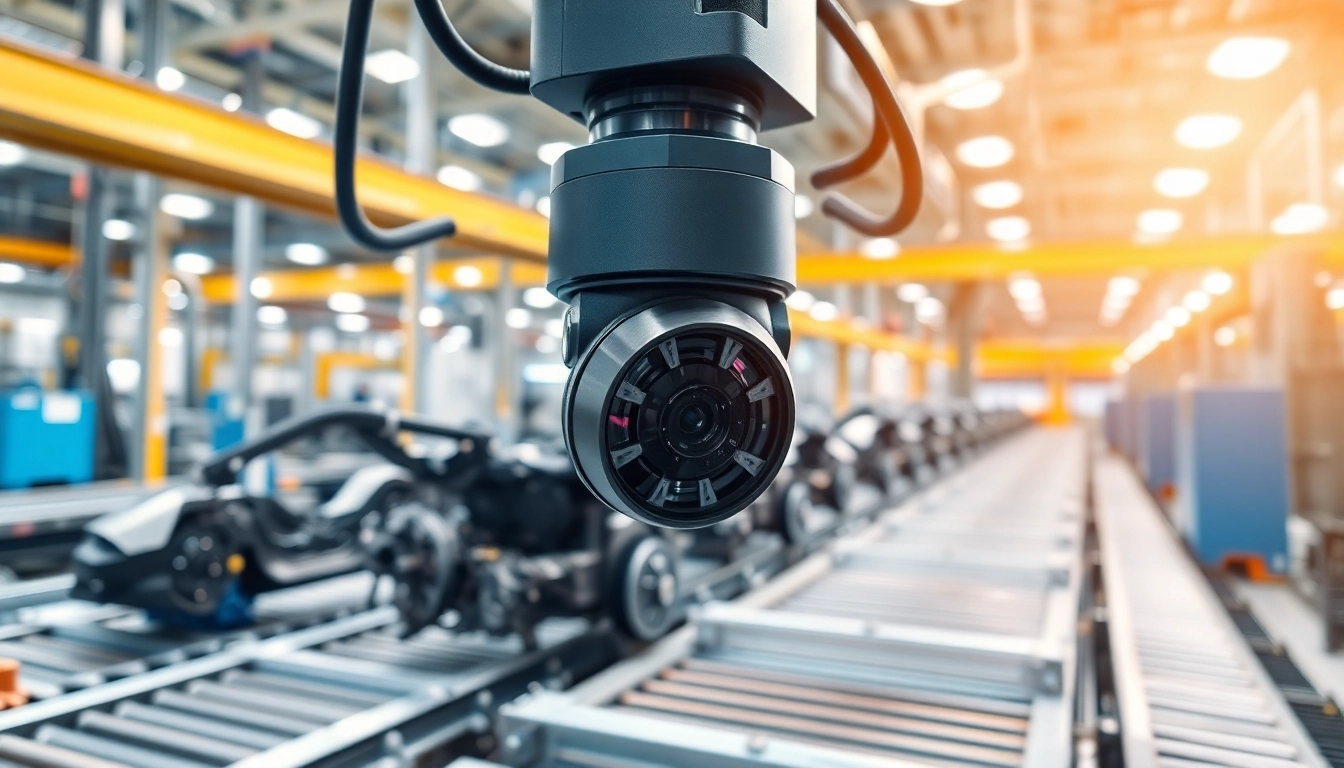
1. Introduction to Machine Vision
Machine vision is a burgeoning field that has gained momentum over the last few decades, significantly impacting various industries by enhancing automation, quality control, and overall operational efficiency. At its core, machine vision involves the use of cameras, artificial intelligence, and sophisticated algorithms to enable machines to interpret visual information in a way that mimics human sight. This technology allows businesses to automate processes that require visual inspection, thus improving speed and accuracy while reducing human error.
1.1 What is Machine Vision?
Machine vision can be defined as a technology that helps machines ‘see’ and interpret visual data. This technology is composed of several crucial components, including image sensors, cameras, lighting systems, and software algorithms. Together, they capture and analyze images, allowing machines to carry out tasks that typically require human visual inspection. These tasks can range from quality assurance in manufacturing to navigation in autonomous vehicles.
1.2 The Evolution of Machine Vision Technology
The development of machine vision has its roots in the early 1960s, driven by the need for more efficient industrial processes. Initially, the technology was limited due to hardware constraints and processing power. As the fields of computer science and optics advanced, so did machine vision systems, evolving from simple monochrome cameras to advanced multi-spectral imaging systems with capabilities for high-speed processing. The advent of artificial intelligence and machine learning has taken machine vision to new heights, enabling even more sophisticated analyses and applications.
1.3 Key Components in Machine Vision Systems
Machine vision systems consist of key components that work in tandem to facilitate image capture, processing, and analysis:
- Cameras: These devices capture images and can be analog or digital, with options for high resolution and frame rates.
- Lighting: Proper lighting is essential for ensuring image clarity and detail, often utilizing LED lights to enhance visibility.
- Processing Hardware: This includes CPUs or GPUs that process the captured images for analysis.
- Software: Specialized algorithms are used to analyze the visual data and make decisions based on the requirements of a particular application.
2. Applications of Machine Vision in Industries
Machine vision finds applications across various sectors, enhancing efficiencies and improving quality through automation and data analytics. Below are the primary industries leveraging this technology:
2.1 Quality Control and Inspection
One of the most significant applications of machine vision is in quality control. Automated inspection systems utilize machine vision to detect defects, measure dimensions, and verify product integrity at various stages of production. For instance, in the automotive sector, machine vision can inspect welds, alignments, and finishes to guarantee that products meet stringent quality standards. This not only speeds up the inspection process but also minimizes human error, resulting in fewer defects and recalls.
2.2 Automated Data Collection and Processing
In numerous industries, machine vision systems are deployed to automate data collection processes. For example, in retail, optical character recognition (OCR) can be implemented to scan barcodes or QR codes to collect inventory data automatically. This technology reduces the time and labor required for manual data entry, allowing businesses to maintain accurate, real-time inventory levels and improve logistics.
2.3 Robotics and Automation Integration
Machine vision plays a vital role in robotics, particularly in applications such as assembling products or autonomous navigation. Robots equipped with vision systems can identify components, ensure that selections are correct, and execute complex maneuvers based on visual cues. In manufacturing, this integration streamlines operations by allowing robots to work alongside human laborers, enhancing overall productivity without sacrificing quality.
3. Benefits of Implementing Machine Vision
Integrating machine vision systems into an organization’s workflow can yield numerous benefits that significantly impact operational efficiency, product quality, and profits.
3.1 Cost Efficiency and Process Optimization
By reducing the need for manual inspection and data entry, machine vision systems lead to significant cost savings. An automated inspection process minimizes labor costs while increasing throughput. Moreover, the insights generated from machine vision analytics can lead to improvements in manufacturing processes, identifying bottlenecks and inefficiencies that can be optimized for greater output.
3.2 Enhanced Accuracy and Precision
Human visual inspection is inherently limited by attention span and fatigue. Machine vision systems, on the other hand, provide exceptional accuracy and consistency, as they are not susceptible to the psychological or physical limitations that humans face. This consistency enhances product quality and reliability, mitigating the risk of defects and enhancing customer satisfaction.
3.3 Real-time Data Analysis and Decision Making
Machine vision systems can provide real-time insights and analytics on production performance, allowing businesses to make data-driven decisions swiftly. This capability enables organizations to respond proactively to issues, adjust production parameters dynamically, and enhance overall operational efficiency.
4. Challenges in Machine Vision Implementation
While machine vision offers significant advantages, several challenges may arise during implementation that organizations need to address.
4.1 Hardware Limitations and Sensor Selection
Choosing the appropriate hardware and sensors is critical to the success of a machine vision system. Different applications require varied sensor types, resolution, and speed. Organizations must understand their specific needs and invest wisely in technology that can deliver suitable performance without overspending on unnecessary capabilities.
4.2 Software Integration and Compatibility
Integrating machine vision systems with existing manufacturing infrastructure can pose challenges, particularly with software compatibility. Companies may need to invest in bespoke software solutions or undergo significant upgrades to ensure all components work seamlessly together.
4.3 Skill Gap and Training Requirements
As machine vision technology evolves, the demand for skilled personnel to manage and operate these systems also increases. Organizations must invest in training and development programs to ensure their workforce is equipped with the necessary skills to leverage machine vision effectively.
5. The Future of Machine Vision Technology
The field of machine vision is poised for continued growth and evolution, driven by advancements in artificial intelligence, machine learning, and processing technology.
5.1 Trends in Machine Vision Development
As industries adopt more complex machine vision systems, trends toward miniaturization and cost reduction are expected. Future systems will likely be more compact, affordable, and capable of integrating seamlessly with IoT devices and smart manufacturing systems, facilitating interconnectivity and real-time data sharing.
5.2 Machine Vision and Artificial Intelligence
The convergence of machine vision and artificial intelligence is a significant development in the field. AI-powered algorithms can enhance image processing, offering greater flexibility and adaptive capabilities to identify patterns and anomalies that may not be detectable through conventional machine vision approaches. This synergy will lead to more intelligent automation processes, further expediting industrial operations.
5.3 Predictions for the Next Decade
Looking forward, predictions suggest that machine vision technology will become increasingly integral to sectors ranging from healthcare to agriculture. In manufacturing, we can expect more autonomous systems capable of performing complex tasks with minimal human oversight. Moreover, as AI progresses, machine vision systems will likely adapt and improve their capabilities in real-time, offering unprecedented analytical power to organizations seeking to enhance operational efficiencies.





